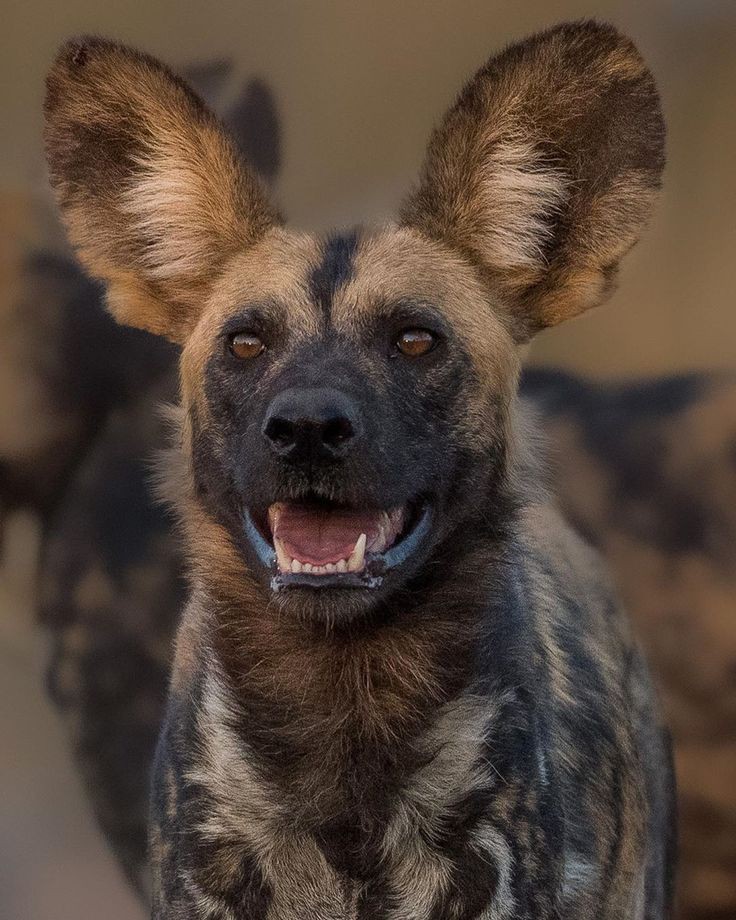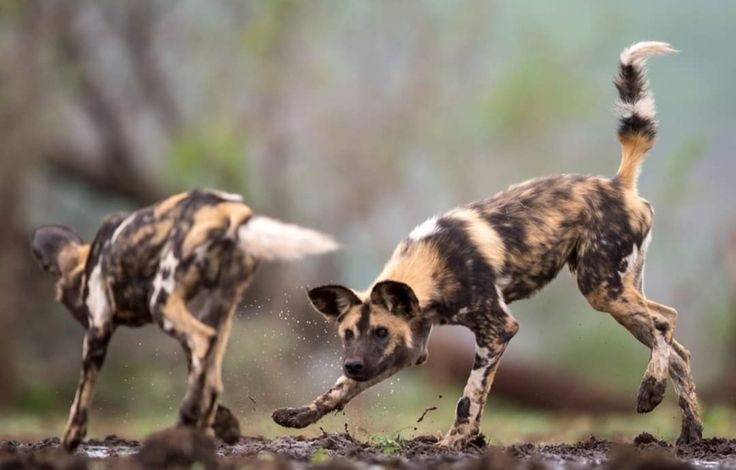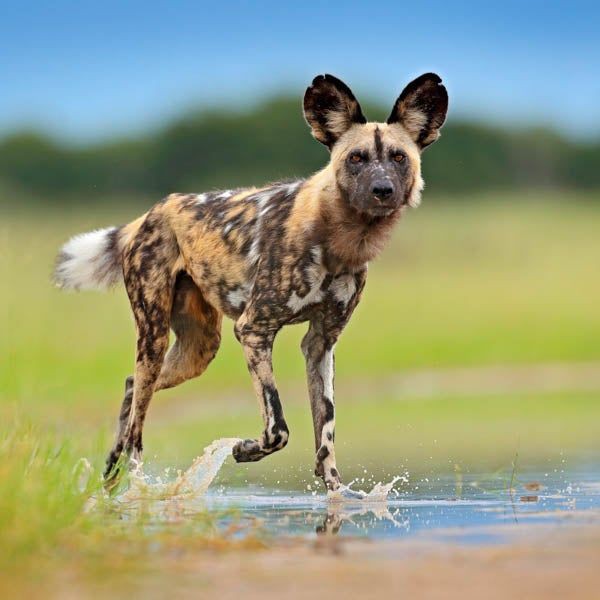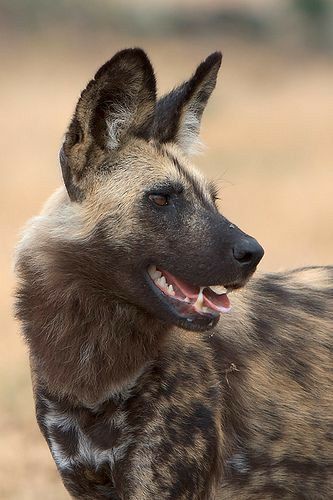
The African Wild Dog
Hello friends on Hive blog, I'm about to educate you on a very special animal.
The African wild dog (Lycaon pictus) also called the African painted dog and the African hunting dog, is a wild canine which is a native species to sub-Saharan Africa. It is the largest wild canine in Africa, and the only extant member of the genus Lycaon, which is distinguished from Canis by dentition highly specialised for a hypercarnivorous diet, and by a lack of dewclaws. It is estimated that about 6,600 adults (including 1,400 mature individuals) live in 39 subpopulations that are all threatened by habitat fragmentation, human persecution, and outbreaks of disease.

The African wild dog is a highly social animal, living in packs with separate dominance hierarchies for males and females. Uniquely among social carnivores, the females rather than the males disperse from the natal pack once sexually mature.
The species is a specialised diurnal hunter of antelopes, which it catches by chasing them to exhaustion. Its natural enemies are lions and hyenas: the former will kill the dogs where possible, whilst hyenas are frequent kleptoparasites.

Like other canids, the African wild dog regurgitates food for its young, but also extends this action to adults, as a central part of the pack’s social life. The young are allowed to feed first on carcasses.
The African wild dog has very strong social bonds, stronger than those of sympatric lions and spotted hyenas; thus, solitary living and hunting are extremely rare in the species. It lives in permanent packs consisting of two to 27 adults and yearling pups. The typical pack size in Kruger National Park and the Maasai Mara is four or five adults, while packs in Moremi and Selous contain eight or nine. However, larger packs have been observed and temporary aggregations of hundreds of individuals may have gathered in response to the seasonal migration of vast springbok herds in Southern Africa. Males and females have separate dominance hierarchies, with the latter usually being led by the oldest female. Males may be led by the oldest male, but these can be supplanted by younger specimens; thus, some packs may contain elderly male former pack leaders. The dominant pair typically monopolises breeding. The species differs from most other social species in that males remain in the natal pack, while females disperse (a pattern also found in primates such as gorillas, chimpanzees, and red colobuses). Furthermore, males in any given pack tend to outnumber females 3:1. Dispersing females join other packs and evict some of the resident females related to the other pack members, thus preventing inbreeding and allowing the evicted individuals to find new packs of their own and breed. Males rarely disperse, and when they do, they are invariably rejected by other packs already containing males. Although arguably the most social canid, the species lacks the elaborate facial expressions and body language found in the grey wolf, likely because of the African wild dog's less hierarchical social structure. Furthermore, while elaborate facial expressions are important for wolves in re-establishing bonds after long periods of separation from their family groups, they are not as necessary to African wild dogs, which remain together for much longer periods.

Disclaimer
Most of the source of knowledge was from Wikipedia. The images from Pinterest.
We appreciate your work and your post has been manually curated by zoology team (oscurity,nelinoeva) on behalf of Amazing Nature Community. Keep up the good work!
I once saw a documentary and they have a powerful bite
We appreciate your work and your post was manually curated by @none! from the DNA team!
Reach us on Discord to learn more about the project!
Hello @kentjustdoit!Congratulations @kentjustdoit! You have completed the following achievement on the Hive blockchain and have been rewarded with new badge(s):
Your next target is to reach 50 upvotes.
You can view your badges on your board and compare yourself to others in the Ranking
If you no longer want to receive notifications, reply to this comment with the word
STOPCheck out the last post from @hivebuzz:
Support the HiveBuzz project. Vote for our proposal!